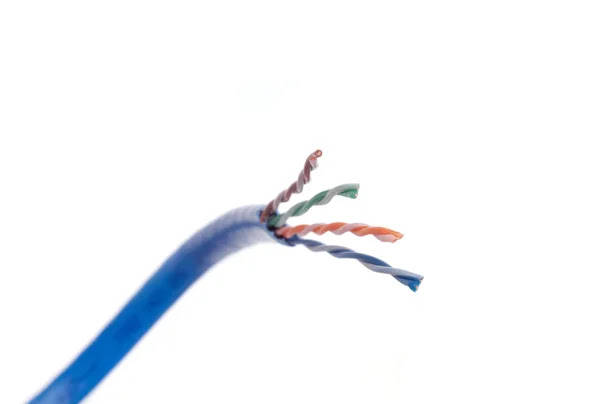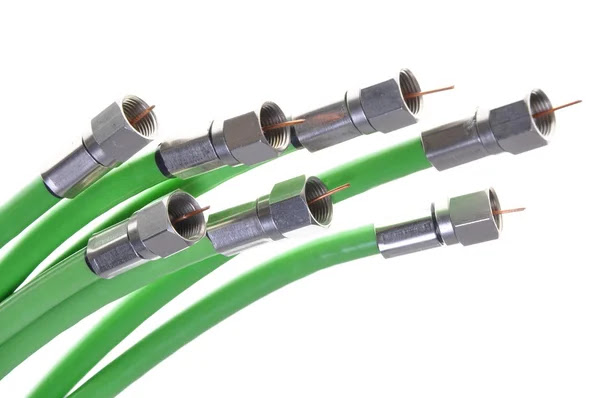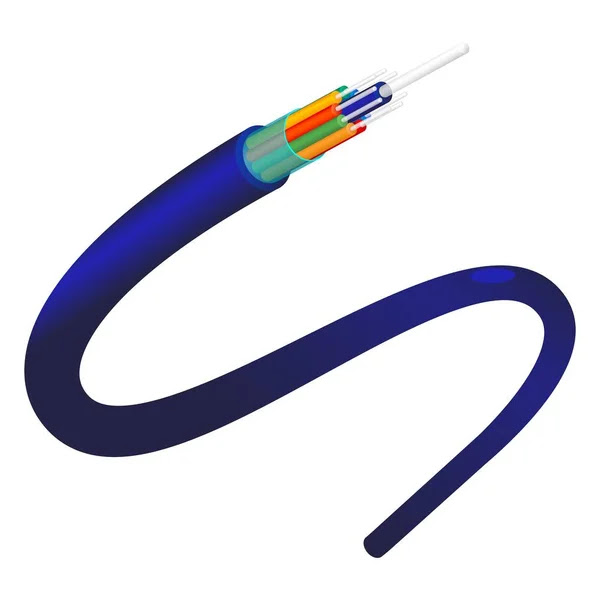electric cable and types.
Cables
A link is a thick wire, or a gathering of wires inside an elastic or plastic covering, which is utilized to convey power or electronic transmissions.
It is likewise called correspondence lines or connections is the way that interface shipper and collector to move information among sending and getting gadgets in a telecom organization. Link is how it is utilized as a medium to move or communicate the sign to the target point.
Twisted pair cable (TPC)
the twisted-pair wire consists of two strands of insulating copper wire, twisted around each other in pairs. they are then converted by another layer of plastic illustration. Twisted pair cable is the same type of cabling system used for home and office telephone systems and local area networking.
Advantage
it is inexpensive and easy to install.
Disadvantage
it creates noise and its transmission is easily interrupted by magnetic.
Shielded Twisted Pair (STP)
STP is the abbreviation of the shielded twisted pair types of the cable of telephone wiring in which each of the two copper wires that are twisted together are coated with an insulating coating that functions as a ground for the wires. the extra covering in shielded twisted pair wiring protects the transmission line from electromagnetic interference leaking into or out of the cable. STP cabling often is used in Ethernet networks. especially fast data rate Ethernet.
cable combines the technique of shielding cancellation and wire twisting. each pair of wires is wrapped in a metallic foil. the pairs of wires are then wrapped in an overall metallic braid or foil. Although STP prevents interference better than UTP, it is more expensive and difficult to install.
the metallic foil must be ground at both ends. if it is improperly grounded, the shield acts like an antenna and picks up unwanted signals. because of its cost and difficulty with termination, STP is rarely used in Ethernet networks. STP is primarily used in Europe.
Feature of STP
speed and throughput = 10 to 100Mbps
Average cost per node = Moderately expensive
Media and connector size = Medium to large
maximum bale length = 100 m (short)
 |
| shielded Twisted pair cable |
Unshielded Twisted Pair (UTP)
UTP short for unshielded twisted pair,, is a popular type of cable that consists of two unshielded wires twisted around each other. Due to its low cost, UTP cabling is used extensively for local area networks and telephone connections. UTP cabling does not offer as high bandwidth or good protection from interference as coaxial or fiber optic cable, but it is less expensive and easier to work with. the UTP is composed of wires and is used in a variety of networks. The UTP is covered by insulating copper twisted around each other
although the UTP is considered the slower data transferring media than the other types of media. UTP is considered the fastest copper-based medium today
the following summarizes the feature of the UTP.
speed and throughput = 10 to 100 Mbps
average cost per node = least expensive
Media and connector size = small
maximum cable length = 100m
categories of the UTP cable
There is the following category of the UTP.
Category 1
Used for telephone communication, Not suitable for transmitting data.
Category 2
Cabel of transmitting data at speeds up to 4 megabits per second(Mbps)
Category 3
Used in 10BASE-T network. can transmit data at a speed up to 10 Mbps.
Category 4
Used in Token Ring networks. can transmit data at a speed up to 16Mbps.
Category 5
Can transmit data at a speed up to 100 Mbps.
Category 6
Typically- category 6 cables consist of four pairs of 24 American Wire Gauge( AWG) copper wires Category 6 cables are currently at the fastest standard for UTP.
 |
| unshielded twisted pair cable |
COAXIAL CABLE
Fiber optics cable
A fiber-optics cable consists of hundreds or thousands of thin strands of glass that transmit pulsating beams of light instead of electricity. It is thinner than human hair. The data transfer rate of fiber optics cable is very fast. there is no chance of data loss. the light pulse is not affected by random electromagnetic interference in the environment. they have much lower error rates than normal telephone twisted pair or coaxial cable.
it is the latest technology according to research if half population of the world is on one side of a single fiber optics cable and the other half on the other side of the same fiber optics cable, then they can communicate with each other if proper multiplexing technique is used.
Fiber optics is more expensive than other cables.
there are two types of fiber optics cable
single mode.
multimode.
single mode fiber-optics cable.
single-mode fiber cable allows only one mode of light to propagate through the fiber, it is capable of higher bandwidth and greater distances than multimode, and it si often used for campus backbones.
its maximum cable length is more than 10km (32808feet).
multimode fiber-optics cable
multimode fiber cable allows multiple modes of light to propagate through the fiber, it is often used for workgroup applications and intrabuilding applications such as computer networks. it used light-emitting diodes(LEDs) as a light-generating device. its maximum length of cable is 2Km (6561feed).
Feature fo fiber-optics cable.
speed and throughput = More than 1 GB.
Average cost per node = Expensive.
Media and connector = Small.
Maximum cable length = More than 10 Km.




